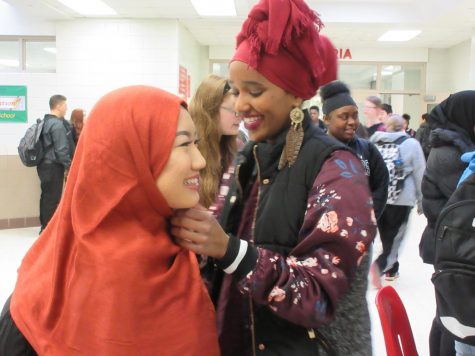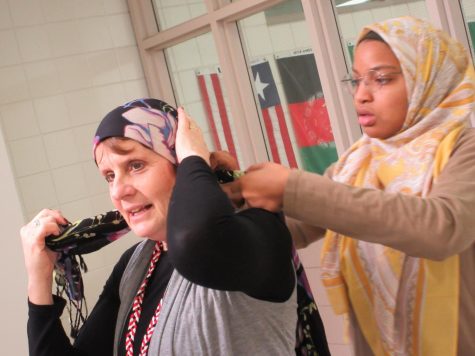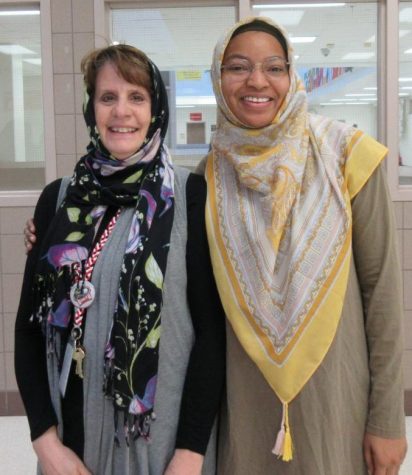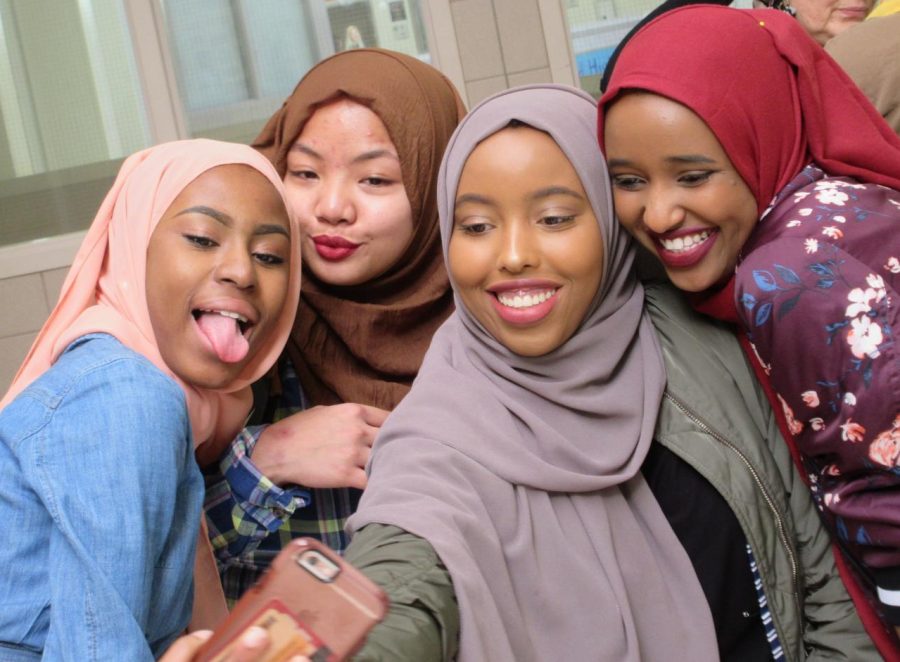Hijab Day: Girls and Women from all Walks of Life Wear Headscarves for a Day
April 1, 2018
On February 1, also known as World Hijab Day, North High girl students and female staff members of many different cultural backgrounds wore hijabs. A hijab is a cloth wrap that goes around a woman’s head. Some people were wearing the headwraps as a cultural statement, some were trying something new, and some were just going through their daily routine.
Aishat Adedayo, a North sophomore, is no stranger to the hijab. She says, “I have been wearing hijab for almost two years now, and at first it felt a little weird because my friends and people at school were not used to seeing me wear it. So I got a lot of awkward looks and even more awkward (and sometimes insulting) questions. But people eventually got used to it.”

Aishat went on to say, “On an ordinary day at North, wearing hijab feels normal to me. It has become a major part of who I am. And although I am aware that I stand out in my surroundings, It only encourages me to take advantage of this fact by being my best self. It is especially nice to go to a school as diverse as North High because I know that I am not the only student that wears hijab. World Hijab Day was the perfect opportunity to not only celebrate our uniqueness but to also give the school the opportunity to experience how it feels to wear hijab, as well as to educate others on its purpose.”

Katie Milton is a North student who doesn’t normally wear hijab, but she decided to try it out for a day. She was pleasantly surprised by the experience.
Katie said, “A lot of the girls said that it would take some time to get used to, due to me not being used to the extra weight or the fabric being there. But for me it felt natural. I understand now that some girls wear it for modesty reasons, and I can see that a lot better after I tried one on. To me it felt like when I was a kid and would hide under the bed covers to hide from monsters, completely protected.”

Tamra Neblett, a North staff member that some students may have encountered in the Dropdown Room (among other places), was a principal organizer of World Hijab Day at North. She had much insight and knowledge to pass on regarding the practice of wearing the hijab and other head coverings.
She said, “Women of many different religions and cultures have covered their heads as a sign of modesty, nobility, fashion or to protect from the elements. There is no good place in time to say when the headwrap originated. In ancient Mesopotamia there were laws about which women could and couldn’t cover their heads. Slaves and prostitutes were forbidden from covering themselves in this manner.”
As for the history of hijab, Ms. Neblett commented, “This is a place where I can speak with some expertise. The covering of one’s hair did not start with the advent of Islam as earlier stated but priestesses of all Abrahamic faiths covered their heads. In the Arab peninsula many women covered their heads as status symbols and a way to protect themselves from the harsh sun. Many would cover their hair and throw the rest of the scarf behind them, much in the fashion of bandanas or how many Jewish women use a scarf to cover their hair. With the revelation of the Qur’an it called for women to cover their bosom (Qur’an 24:31). BOOM! Hijab was born.”

Ms. Neblett is a regular wearer of hijab, but she did have some thoughts about wearing it on this particular day (World Hijab Day): “Usually wearing hijab is just something I do. It’s as regular as putting on a shirt before coming to school and to forget it would make me feel naked. Today, I felt a bit of pride in wearing my hijab to school. Like it was not only accepted but people were excited about it.”

Ms. Neblett also had some thoughts on being an everyday wearer of hijab in an American culture where it is not a “mainstream” practice: “I cover my hair and my body to pretty much the same degree all year round. In school and out of it. Most days it doesn’t feel like anything. It’s just what I do now, I started wearing hijab when I converted to Islam 2+ years ago. Sometimes when I’m in places where there are no Muslims, like small towns, it can feel like everyone is staring at me. They are. I’m unusual and foreign to them but I find that it allows me to be more outgoing and warmer to people because I know they have questions and I feel proud to (hopefully) set a good example of what a Muslim is in those places. If I’m in places with a lot of Muslims, like in a mosque, it feels good to know that a lot of the women around me know what sorts of struggles I have faced because of my hijab and we can support each other.”
Ms. Neblett also had some personal feelings to share about her hijab:
“I love it. It makes me feel comfortable, protected and I love that people are always looking at my face. It makes me feel beautiful and confident and I hope that every woman, whether they cover their heads or show their hair to the world, can feel like that when they go outside.”



